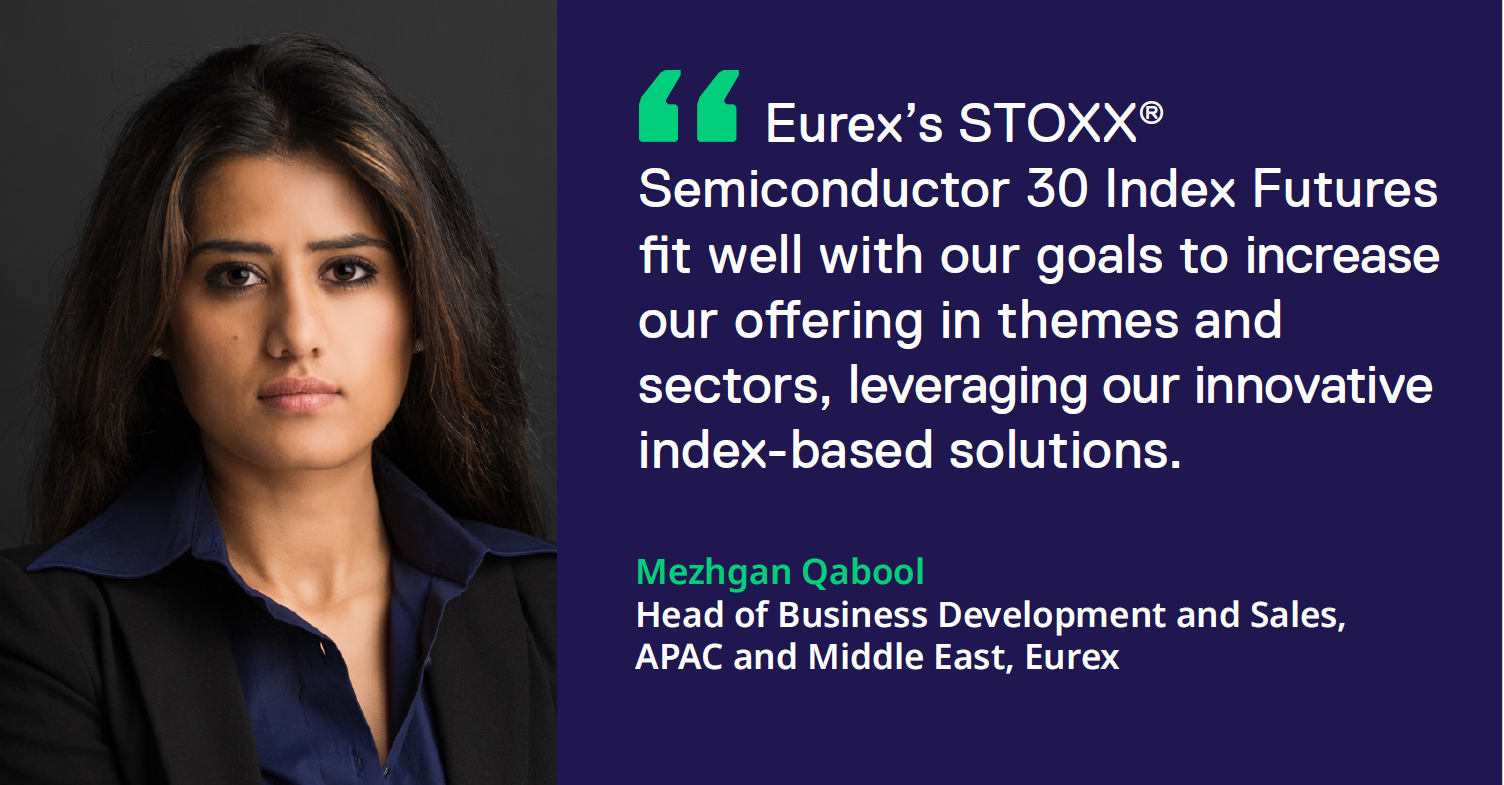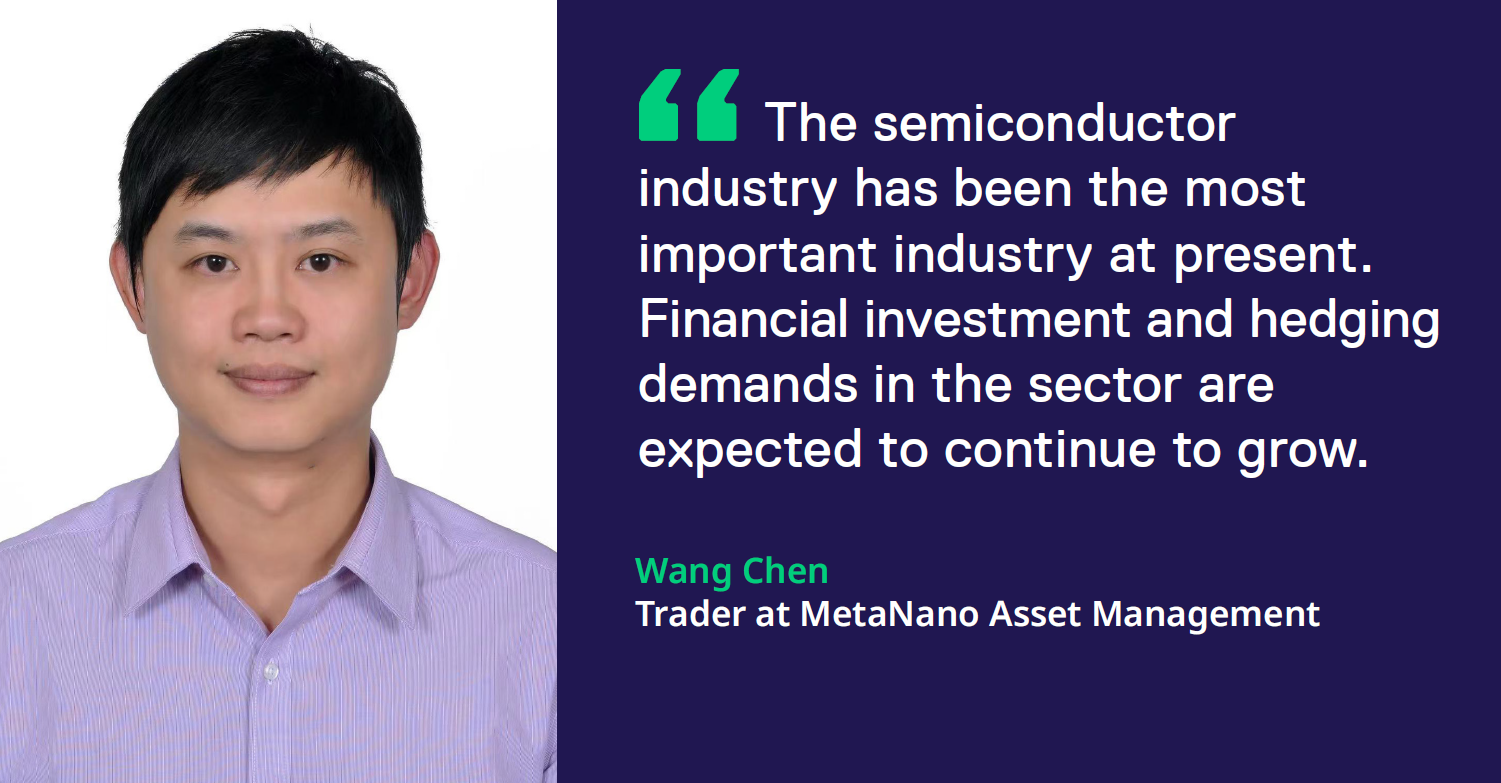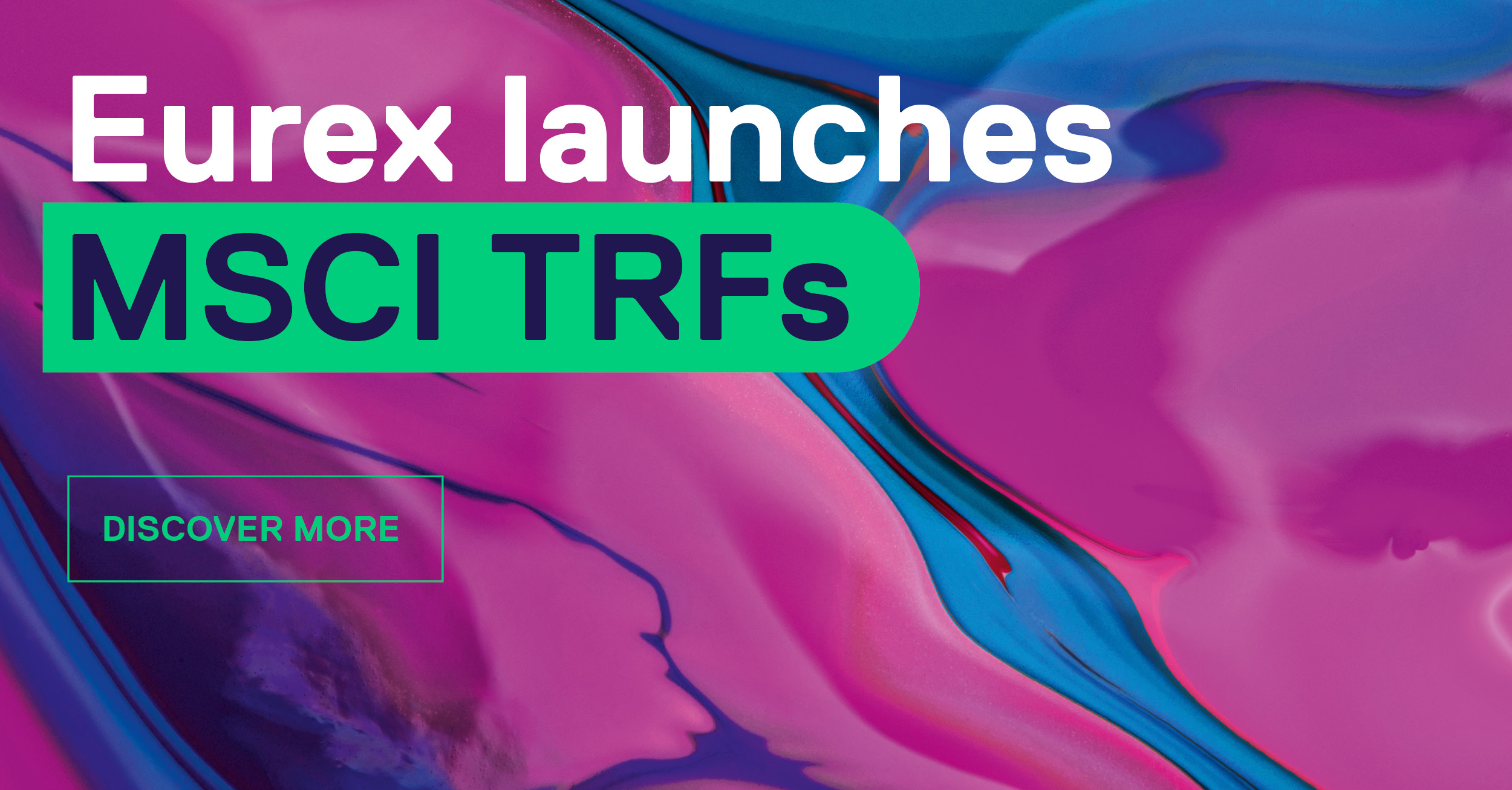
What’s the rationale behind the launch of the new STOXX® Semiconductor 30 Index Futures?
Mezhgan Qabool : The semiconductor industry has gained interest over the past few years. Developments in artificial intelligence and autonomous driving especially emphasize the relevance of this sector.
Semiconductors are essential for defense, communication and technology sectors globally. This prompted nations to reassess their dependence on foreign suppliers and prioritize the secure production and control of semiconductors more than before.
Given the geopolitical importance of this sector, Eurex has launched the STOXX® Semiconductor 30 Index Futures as part of our already established strong sector futures offering with ISS-STOXX as investors seek more exposure to the largest semiconductor companies.
Why would you want to trade semiconductor futures?
Wang Chen Kai: The semiconductor industry has been leading technological advancements in the past and has now become the most important industry. It will likely continue to drive the development of the world economy in the foreseeable future.
Therefore, both investments and hedging demands are expected to continue to grow. The trading volume of derivative products will likely correspondingly increase as well.
At the same time, experienced traders can also expect to obtain reasonable profits from it.
What can you tell us about Eurex’s STOXX® Semiconductor 30 Index Futures product?
Mezhgan Qabool: In collaboration with ISS-STOXX, Deutsche Börse Group’s index provider, we developed an index that covers the 30 largest global semiconductor companies listed on U.S. exchanges. This includes Nvidia, one of the most popular stocks in that industry, as well as top Taiwanese names.
The index is a USD-based price return index, and the futures trade almost around the clock, from 01:00 CET (08:00 HKT / SGT) to 22:15 CET, covering the full trading day in the U.S. and Asia.
A liquidity provider scheme supported the product launch, offering regular rebates and revenue-sharing elements from day one.
We have active prices onscreen by our liquidity provider partners, and more are gearing up to participate in the order book in the coming days. We anticipate good liquidity and participation.
What are the main benefits of using Eurex’s STOXX® Semiconductor 30 Index Futures?
Wang Chen Kai: First, the product’s long trading hours. They offer the advantage of bridging the gap between the closing of Asian markets and the opening of American markets, providing a seamless trading environment on Eurex. This allows for the timely capturing of trading opportunities arising from newly available information.
Second, the index comprises major semiconductor companies worldwide, making it a pivotal benchmark for the global semiconductor industry. It accurately reflects the overarching trends within the semiconductor sector.
How did you manage your strategies before Eurex launched the STOXX® Semiconductor 30 Index Futures?
Wang Chen Kai: Before Eurex launched the STOXX® Semiconductor 30 Index Futures, we typically traded futures from Taiwan, the MSCI TW Index from Hong Kong, and the FTSE Taiwan Index from Singapore, as well as stocks of TSMC, a prominent semiconductor company.
These indexes encompass a significant portion of the semiconductor industry, playing a crucial role in our strategy allocation and exerting a pivotal influence on our pricing and arbitrage activities.
What are the participation expectations for the STOXX® Semiconductor 30 Index Futures?
Mezhgan Qabool: The global semiconductor industry has boomed, with sales growing by more than 20 percent to about USD 600 billion in 2021. Sales are estimated to double this decade, moving towards USD 1 trillion in revenues by 2030.
About 70 percent of the growth is predicted to be driven by just three industries: automotive (particularly electric vehicles), data storage (AI and cloud computing), and wireless (smartphones, 5G).
The U.S. and European chip industries are looking at diversifying all parts of the semiconductor supply chain: The U.S. intends to grow its domestic capacity share from 11 percent in 2020 to 30 percent in 2030, and Europe is aiming to expand its share from 9 percent to 20 percent over the same period.
America leads the world in chip design, with American companies accounting for 47 percent of global semiconductor sales in 2019, while South Korea and Taiwan lead in manufacturing, with 43 percent of global manufacturing capacity.
Each of the five major global semiconductor producers—China, South Korea, Japan, Taiwan, and the United States—is also a large chip importer.
Given the global and geopolitical intricacies and the fact that the global semiconductor production system is integrated and not easy to disentangle, we foresee relevance for this product across our global client base.
We are seeing increasing demand in Asia, where Taiwanese companies are well represented in the index, and appetite from our U.S. and European client bases is growing.
Further, strategically, the product fits well with our goals to increase our offering in themes and sectors, leveraging our innovative index-based solutions.




